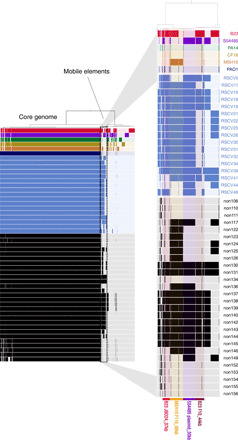Fig. 2. Genome alignments highlight the acquisition of mobile genetic elements by PAO1 isolates.

Map of the pangenome containing the ancestral co-inoculated P. aeruginosa strains and the derived PAO1 isolates sequenced. Black bars indicate genome sequences belonging to the non-RSCV isolates, and blue bars indicate sequences belonging to the RSCV isolates. The six co-inoculated strains are in red (B23), purple (S54485), green (PA14), yellow (CF18), orange (MSH10), and dark blue (PAO1). The solid block of bars to the left represents the core P. aeruginosa genome shared by all strains. The zoomed-in area to the right represents part of the accessory genome that was largely absent in the PAO1 ancestor and acquired during evolution in the porcine wound. The presence of these bars in the accessory genome of the recovered PAO1 isolates indicates recently acquired mobile genetic elements.
